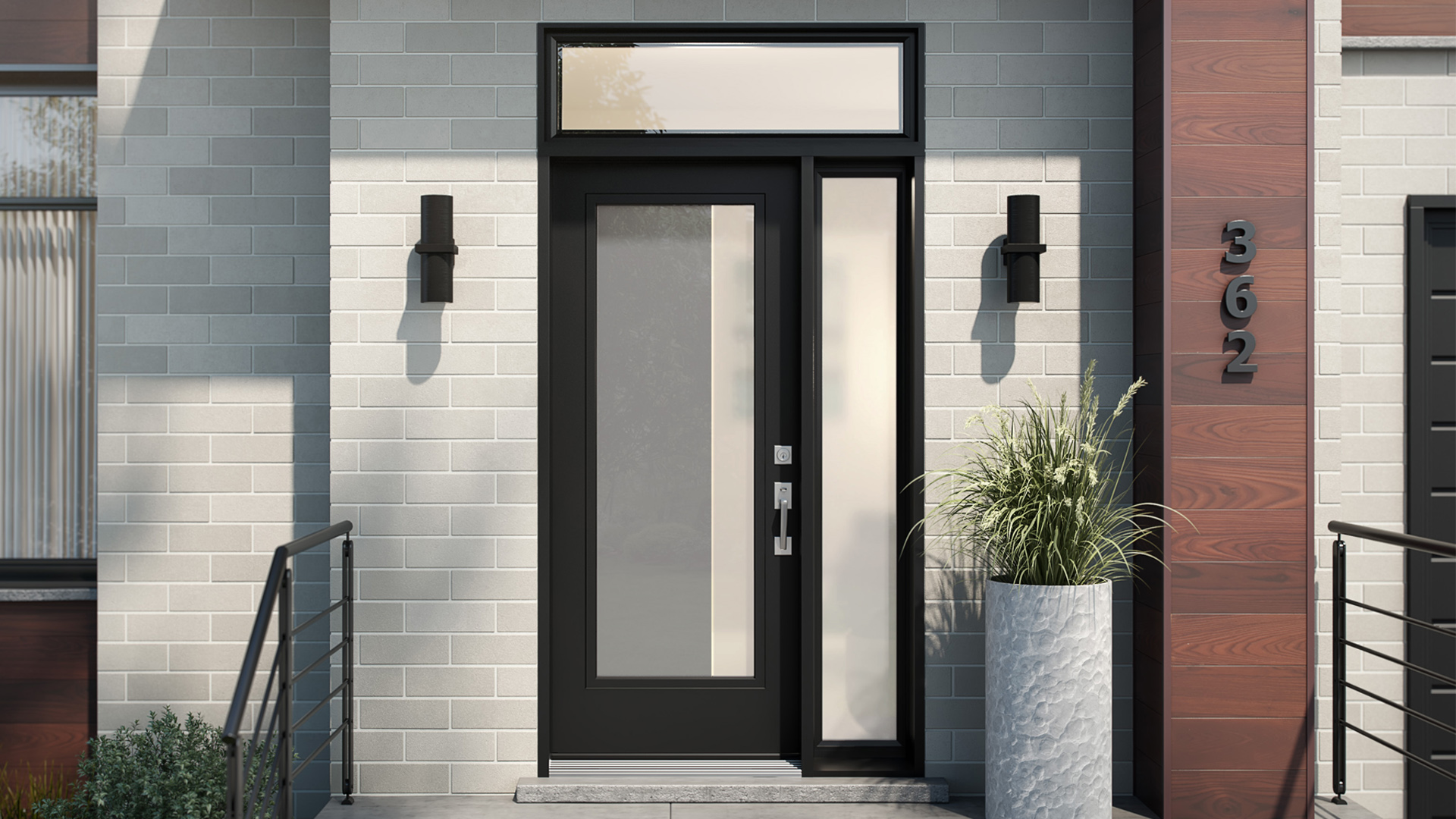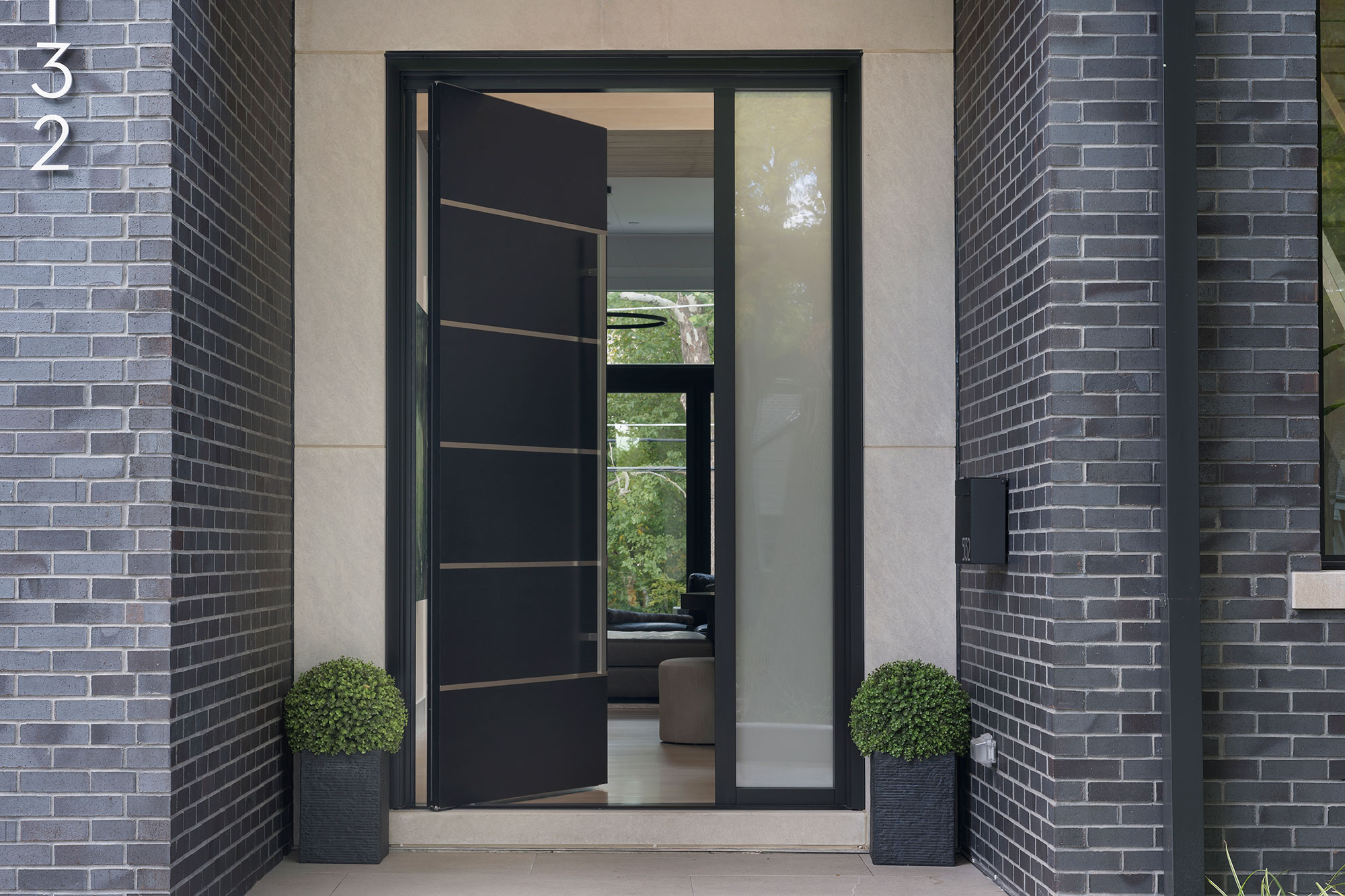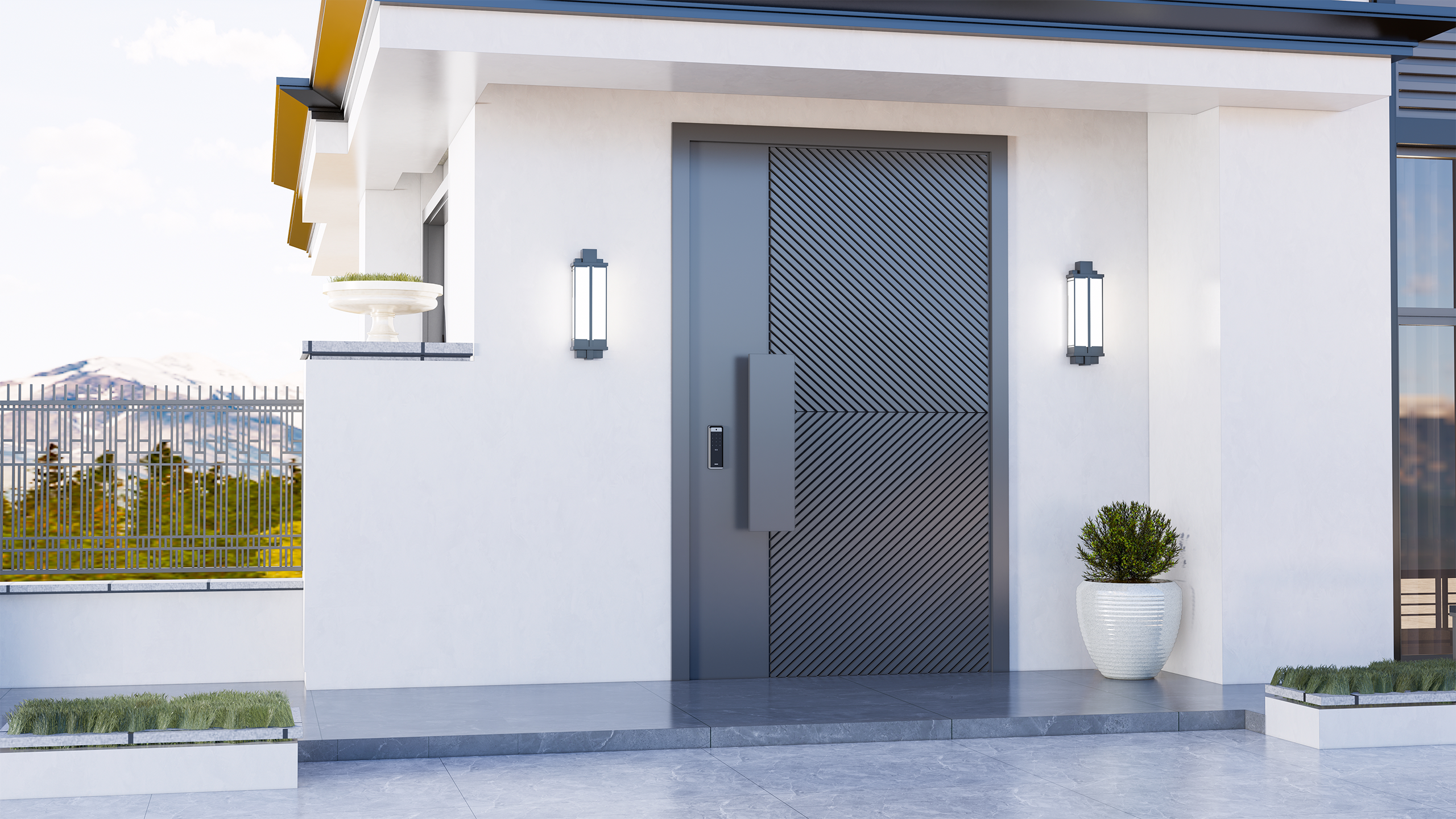What is the longest lasting exterior door?

Introduction to Exterior Door
The exterior door plays a significant role in your home’s curb appeal and security. A strong, durable exterior door can do more than keep the elements out—it can improve your house’s overall look and energy efficiency. Whether upgrading your current door or choosing one for a new build, understanding what makes an exterior door durable is key to making the best choice for your home.
What Makes an Exterior Door Durable?
A durable exterior door must withstand daily use, harsh weather, and even security threats. To achieve this, several factors come into play:
1. Material Quality:
The material of the door significantly impacts its lifespan. Steel, fiberglass, and solid wood are commonly known for their strength. Steel doors, for example, are highly resistant to dents, scratches, and warping, making them one of the longest-lasting options available. Fiberglass doors offer excellent resistance to weather damage, while wood doors can last many years with proper care and maintenance.
2. Weather Resistance:
Exterior doors are constantly exposed to the elements—rain, snow, extreme heat, and cold. A good exterior door will resist moisture damage, fading, and warping. Fiberglass and steel doors excel in this area, as they do not swell or crack with changes in humidity or temperature. Wood doors, while beautiful, need more care to prevent issues like rot or warping in wet climates.
3. Insulation:
A durable exterior door doesn’t just keep the elements out, but it also helps maintain your home’s internal temperature. Insulated doors can significantly affect your home’s energy efficiency, keeping your heating and cooling costs down. Steel and fiberglass doors often have built-in insulation, while wood doors can also be insulated with foam cores to enhance their energy-saving properties.
4. Construction and Finish:
How a door is constructed can affect its durability. Strong frames and secure seals ensure the door fits well and protects from wear. Good finishes also protect the door’s surface from scratches and moisture damage. High-quality finishes will help your door maintain its appearance while enhancing its resistance to the elements.
The Importance of Choosing the Right Door for Your Home
Choosing the right exterior door goes beyond just picking one that looks good. It’s about finding a door that suits your home’s needs and provides long-term value. Here’s why it’s so important:
1. Security:
An exterior door is your first defense against unwanted guests. A sturdy, reliable door made from solid materials like steel or fiberglass will offer superior protection compared to a hollow-core wood door. Look for doors with strong locks, reinforced frames, and secure hardware to keep your home safe.
2. Curb Appeal:
Your front door sets the tone for your home’s exterior. A well-chosen exterior door can elevate the look of your house, increasing its curb appeal. Whether you choose a sleek modern steel door, a classic wooden door, or a stylish fiberglass door, the right design can make a lasting impression on visitors.
3. Energy Efficiency:
Your home’s energy efficiency starts with your exterior door. A door that lets in drafts or doesn’t fit properly can lead to higher heating and cooling bills. Choosing a door with proper insulation will keep your home comfortable year-round and save you money in the long run. Insulated fiberglass and steel doors are excellent choices for boosting energy efficiency.
4. Weather Protection:
A high-quality exterior door will protect your home from the elements. The right door will act as a barrier, keeping the outside weather where it belongs, whether it’s heavy rain, wind, or snow. Doors made of weather-resistant materials like fiberglass and steel are ideal for homes in areas with extreme weather conditions.
5. Maintenance Needs:
Some doors require more maintenance than others. For instance, wood doors need regular sealing and care to prevent damage from moisture. Steel and fiberglass doors, on the other hand, require less upkeep. Consider the maintenance you will commit to when choosing your exterior door.
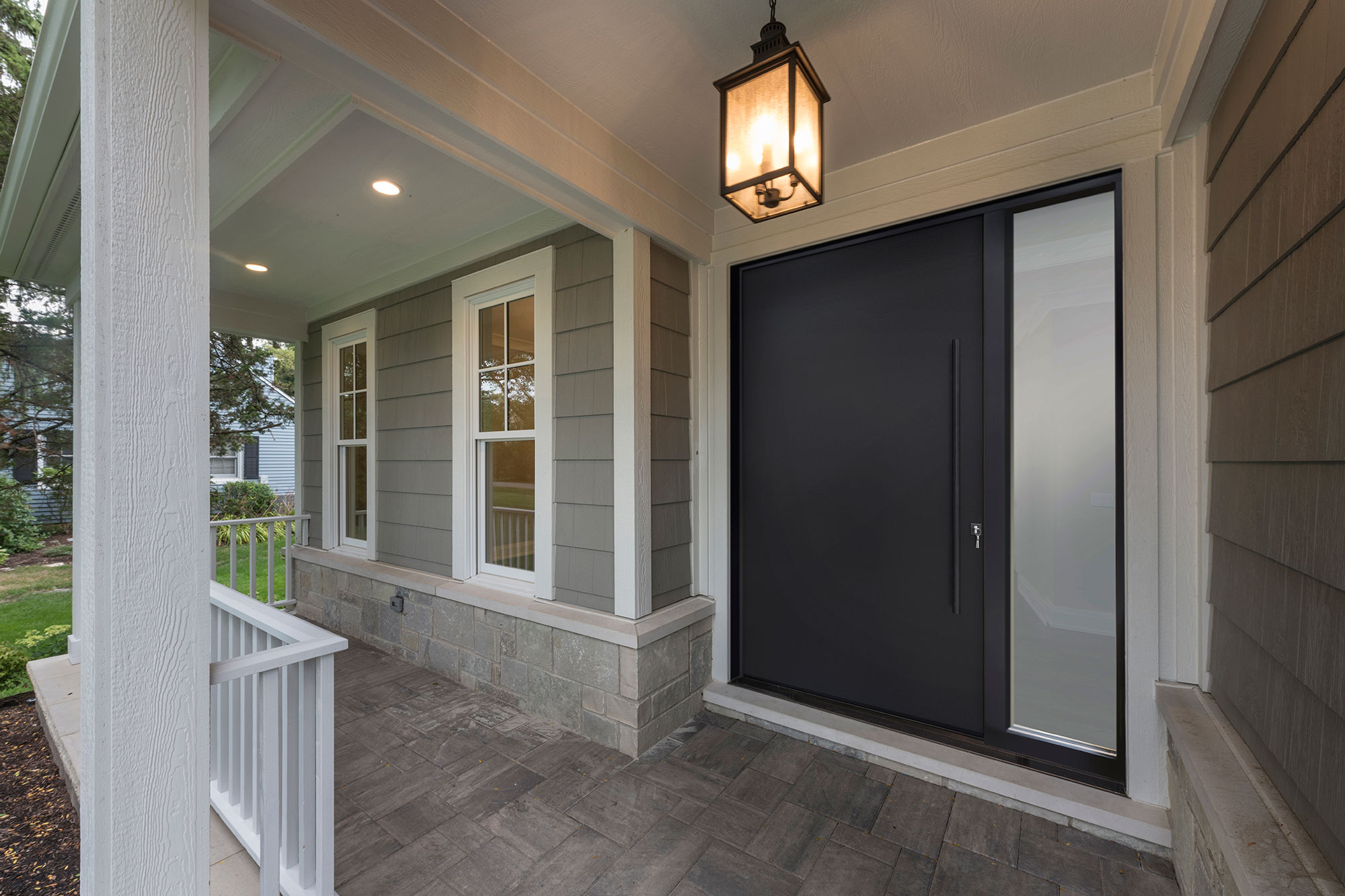
Common Types of Exterior Door
When choosing an exterior door, several options are available, each offering its unique benefits. Exterior doors not only provide security and privacy but also enhance the curb appeal of your home. Whether you want a traditional wooden door or a modern metal option, selecting the right exterior door is essential for functionality and style.
Stainless Steel Exterior Door
Stainless steel exterior doors have become popular for homeowners looking for durability and a sleek, modern aesthetic. These doors are highly corrosion resistant, making them perfect for harsh weather conditions, especially in coastal areas where saltwater can cause other materials to deteriorate. Stainless steel exterior doors are also known for their strength, offering top-notch security while maintaining a polished look that complements modern home designs.
In addition to their durability, stainless steel doors require minimal maintenance. They are less likely to warp, crack, or peel compared to other door materials like wood or cast aluminum. Their ability to withstand everyday wear and tear makes them a practical and long-lasting choice for anyone seeking a reliable exterior door.
Why Stainless Steel Door Is Known for Their Durability?
Stainless steel exterior doors are well-known for their exceptional durability. The material is resistant to rust, corrosion, and damage from external elements such as rain, snow, or intense sun exposure. Unlike wooden doors, which can swell or warp due to moisture, stainless steel doors maintain their form and functionality over time. The surface is non-porous, meaning it doesn’t absorb moisture, which helps prevent issues like rot or mold growth that can be common with other exterior doors.
Moreover, stainless steel doors are fire-resistant, adding extra safety to your home. They are also highly resistant to dents and scratches, making them an excellent option for homes in high-traffic areas or families with young children and pets. For homeowners seeking a door that will stand the test of time and provide a high level of security, stainless steel exterior doors are a top contender.
Common Stainless Steel Door Designs and Styles
Stainless steel doors come in various designs and styles to suit different tastes and home aesthetics. One of the most popular styles is the minimalist, clean-cut design that focuses on simple lines and large, unbroken surfaces. This style is ideal for modern homes with a sleek and contemporary look.
For those who prefer a more decorative approach, stainless steel doors can be fitted with intricate patterns, glass panels, or additional features like ornamental handles and hinges. These designs combine the strength of stainless steel with the elegance of decorative elements, making them a versatile option for various architectural styles.
Wood Exterior Door
Wood exterior doors are a classic choice for homeowners looking to add a touch of elegance and warmth to their home. Known for their timeless appeal, wood doors offer a natural beauty that is hard to replicate with other materials. Whether you choose a traditional or modern design, wood exterior doors provide aesthetic charm and functional value. They are often selected for their ability to create a welcoming entrance while offering reliable security and insulation.
Do Wood Doors Last Longer with Maintenance?
Wood exterior doors, while beautiful, require regular maintenance to keep them in good condition. Wood doors can be susceptible to warping, cracking, and rotting without proper care due to exposure to the elements. However, when maintained correctly, wood doors can last for many years and continue to provide excellent performance.
Regular maintenance includes refinishing or repainting the door every few years to protect it from moisture, UV rays, and temperature changes. This can help prevent the door from drying out and cracking over time. Additionally, applying weatherproof sealants and ensuring the door is properly sealed around the edges can help protect it from rain and humidity.
Best Wood Types for Exterior Door
When choosing a wood exterior door, selecting the correct type of wood is crucial for both durability and aesthetic appeal. Some types of wood are naturally more resistant to the elements, making them better suited for exterior doors.
Oak:
Oak is a popular choice for exterior doors due to its strength, durability, and resistance to warping. Its rich grain pattern also adds a touch of elegance to any home. Oak is ideal for areas that experience varying weather conditions, as it can withstand moisture and heat without losing shape.
Mahogany:
Known for its deep, reddish-brown color and smooth texture, mahogany is a luxury wood choice for exterior doors. It’s highly resistant to decay, making it an excellent option for homeowners looking for a long-lasting door. Mahogany doors also provide a timeless and sophisticated appearance.
Teak:
Teak is another top-tier option for exterior doors. This wood is naturally rich in oils, making it resistant to water and pests. Its ability to withstand harsh weather conditions while maintaining its beauty makes it a fantastic choice for exterior use.
Cherry:
Cherry wood offers a warm, reddish hue that darkens over time, adding character to your door. While it’s less durable than oak or mahogany, cherry wood can make a beautiful exterior door if properly maintained and sealed.
Cedar:
Cedar is lightweight, resistant to rot, and has a pleasant scent. It’s perfect for homes in more humid areas as it helps resist moisture damage. Cedar wood exterior doors have a rustic charm and are an excellent choice for cottage-style homes or anyone looking for a natural, earthy aesthetic.
Summary
Choosing the right wood for your exterior door depends on your needs, climate, and style preferences. Each wood type offers distinct benefits, so selecting one based on durability and appearance is key to ensuring that your door will last and continue to enhance your home for years.

Cast Aluminum Door
Cast aluminum exterior doors are an excellent choice for homeowners seeking durability and style. These doors are made from aluminum and other materials and cast into molds to create intricate designs. Known for their strength, cast aluminum doors provide security and an aesthetic appeal that suits various architectural styles. They are particularly popular for their lightweight nature and long-lasting qualities.
Pros and Cons of Cast Aluminum Exterior Door
Pros:
1. Durability:
Cast aluminum exterior doors are highly resistant to rust, corrosion, and weathering. Unlike wood or steel doors, they do not suffer from rot, warping, or rust, making them an ideal choice for regions with harsh weather conditions.
2. Low Maintenance:
Cast aluminum doors require minimal upkeep compared to other materials like wood or steel. A simple cleaning with mild soap and water keeps them looking good for years. There’s no need for repainting or refinishing as often as wood doors.
3. Lightweight:
Aluminum is lightweight, making it easier to handle and install than heavier materials like steel. This can be an advantage regarding installation and long-term ease of use.
4. Energy Efficient:
Many cast aluminum exterior doors are designed with insulation in mind. They help keep your home well-insulated by providing a barrier against heat loss, thus improving energy efficiency and lowering utility bills.
5. Aesthetic Appeal:
Cast aluminum doors come in various styles, from sleek and modern to more traditional designs. They can also be customized with decorative elements, providing a unique look to match your home’s exterior.
Cons:
1. Initial Cost:
Cast aluminum doors tend to have a higher initial cost than other options like wood. However, the door’s longevity and low maintenance requirements often justify this cost.
2. Susceptibility to Dents:
While durable, cast aluminum can be more prone to dents and scratches from heavy impacts. Though these dents are usually cosmetic, they may affect the door’s appearance over time.
3. Limited Insulation:
While some models come with insulated cores, not all cast aluminum doors offer the same level of insulation as other materials like solid wood. It’s essential to ensure that the door you select is designed to meet your insulation needs.
Why Aluminum Is a Great Option for Harsh Climates?
Aluminum, especially cast aluminum exterior doors, performs exceptionally well in harsh climates. Here’s why:
1. Corrosion Resistance:
Aluminum is naturally corrosion-resistant, making it an excellent choice for areas with high humidity, coastal environments, or regions that experience heavy rain or snow. Unlike steel doors, aluminum does not rust, ensuring that your exterior door will stay strong and functional over time, regardless of the weather conditions.
2. Weatherproof:
Cast aluminum doors are designed to withstand extreme temperatures. Whether it’s the scorching heat of summer or the cold of winter, aluminum doesn’t expand or contract like wood or vinyl, making it ideal for regions with significant temperature fluctuations.
3. Pest Resistant:
In climates where termites or other pests are a concern, aluminum exterior doors provide an added layer of protection. Unlike wood, aluminum doors are not vulnerable to insect infestations, helping maintain your door’s and home’s integrity.
4. Low Maintenance in Harsh Climates:
In areas with heavy rain or snow, maintaining a wooden door can be challenging, as moisture can cause warping and swelling. Cast aluminum doors, however, do not absorb moisture, reducing the risk of damage and ensuring the door remains in good condition for many years.
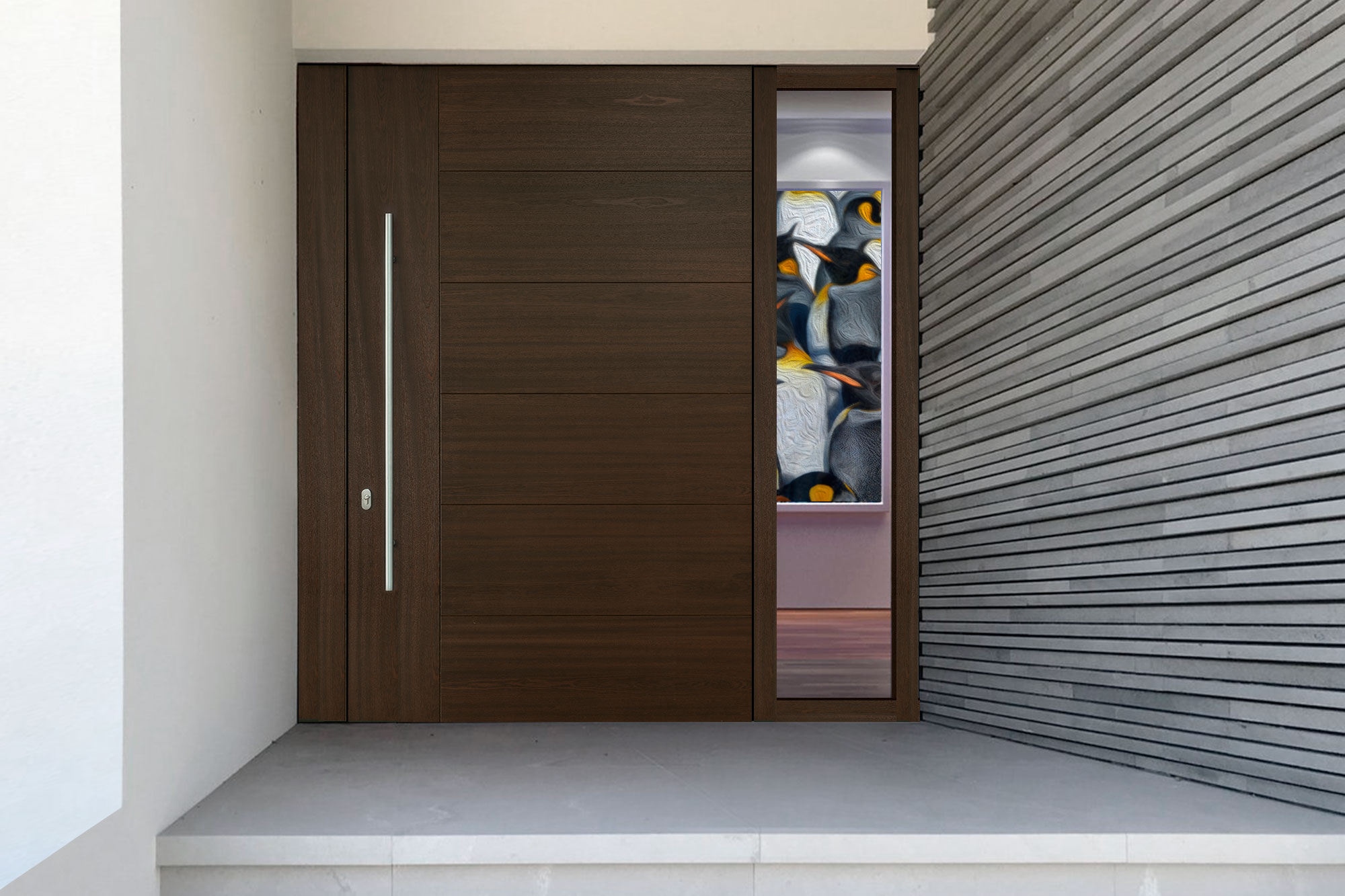
Factors That Influence the Longevity of Exterior Doors
Several factors come into play when it comes to the longevity of exterior doors. Choosing the right exterior door, ensuring it’s installed properly, and maintaining it regularly can all contribute to how long your door lasts. Here are the key factors that influence the lifespan of your exterior door.
Material Quality: Why It Matters
The material of your exterior door is one of the most critical factors in determining its longevity. The better the quality of the material, the longer the door will last. High-quality materials such as solid wood, steel, or cast aluminum are known for their durability and resistance to wear and tear.
A cheap, low-quality door might show signs of damage sooner, such as cracking, warping, or fading. For example, a solid wood exterior door, though beautiful, requires regular maintenance to stay in good condition. On the other hand, a fiberglass or steel door often provides more durability with less maintenance.
Investing in high-quality materials means fewer repairs and replacements in the future, saving you money in the long run. A well-made exterior door will last longer and provide better insulation and security for your home.
Exposure to Weather Conditions: How Sun, Rain, and Snow Impact Your Door
Weather conditions play a massive role in the longevity of exterior doors. Sun, rain, snow, and fluctuating temperatures can significantly impact how your door performs over time.
Sun Exposure:
Prolonged exposure to the sun can cause certain materials, like wood and paint, to fade, crack, or warp. This is particularly common with wooden exterior doors, where UV rays can dry out the wood and cause it to shrink or crack. Even metal doors can suffer from paint fading due to constant sunlight.
Rain and Humidity:
Rain can cause wood and steel to deteriorate over time. Wood absorbs moisture, leading to swelling, rotting, or mold growth. Similarly, steel doors may rust if the finish is damaged, especially in areas with high humidity. Choosing a moisture-resistant material or regularly sealing the door can help minimize this risk.
Snow and Ice:
In colder climates, snow and ice can be just as damaging. When moisture from melting snow seeps into cracks or crevices in the door, it can cause the material to expand and contract, leading to warping and cracking. Additionally, freezing temperatures can cause certain materials to become brittle, leading to cracks or breaks.
Door Frame and Hardware: Strengthening the Foundation for Longevity
The door frame and hardware are just as important in terms of durability as the door itself. A sturdy frame ensures the door stays in place and functions properly over time. A weak frame can cause the door to sag or misalign, leading to gaps that let in drafts, moisture, or pests.
The hardware—such as hinges, handles, and locks—also plays a crucial role in the door’s performance. Rusty or damaged hardware can compromise your door’s function and appearance. High-quality, corrosion-resistant hardware, like stainless steel or brass, will help keep your door operating smoothly for many years.
Additionally, the door’s alignment with the frame is essential for longevity. A properly aligned door prevents unnecessary strain on the hinges and lock mechanism, reducing the risk of malfunction or damage.
Proper Installation: Ensuring Your Door Lasts as Long as Possible
Proper installation is key to maximizing the lifespan of your exterior door. Even the highest-quality door will wear out quickly if not installed correctly. An improperly installed door can have gaps, be misaligned, or even be difficult to open and close. These issues can lead to greater wear and tear, ultimately reducing the door’s longevity.
Ensure the door is installed by a professional who can secure it properly in the frame. The door should be sealed tightly to prevent drafts, water, and dirt from entering your home. A professional installer will ensure the door is aligned correctly, allowing it to function smoothly and last much longer.

Maintenance Tips for Prolonging Door Lifespan
Regular maintenance is essential to keeping your exterior door in good condition. With proper care, you can extend the life of your door and avoid costly repairs or replacements.
Cleaning:
Keep your door clean by wiping it down regularly to remove dirt, dust, and grime. Use a soft cloth with soapy water for metal doors, while wood doors might benefit from a specialized wood cleaner.
Sealing:
Wood and metal doors should be sealed periodically to protect them from moisture. Applying a fresh coat of sealant or paint for wood doors will help prevent cracking and warping. Metal doors can be treated with a protective coating to prevent rust.
Check for Gaps:
Over time, weatherstripping and seals can wear out. Inspect your door periodically to ensure the seals are still intact, and replace them if necessary to prevent air leaks and moisture entry.
Lubricate Hardware:
Hinges, locks, and handles should be lubricated regularly to keep them functioning smoothly. This helps prevent rust and wear, especially on exterior doors exposed to the elements.
How Long Do Different Exterior Doors Last?
The lifespan of an exterior door depends on several factors, including the material, the level of maintenance, and the climate conditions in your area. Different types of doors have different lifespans, with each material offering varying levels of durability. Here’s a breakdown of how long different exterior doors can last when properly maintained.
Average Lifespan of Stainless Steel Door
Stainless steel exterior doors are known for their strength and long-lasting durability. On average, a stainless steel door can last anywhere from 30 to 50 years, depending on the quality of the door and the conditions it’s exposed to. One of the main reasons for this impressive lifespan is the material’s resistance to corrosion, rust, and damage from weather elements.
Stainless steel doors are also highly resistant to dents, scratches, and fading, which means they maintain their appearance and function over time. However, regular cleaning and occasional maintenance—like checking the door’s seals—can help ensure it lasts at the upper end of this lifespan. In regions with extreme weather conditions, particularly areas with high humidity or saltwater exposure, stainless steel doors may require a protective coating to maintain their rust-resistant properties.
Average Lifespan of Wooden Door
Wooden exterior doors are beautiful and offer a natural aesthetic, but their lifespan can vary significantly based on the type of wood, maintenance, and environmental factors. On average, a well-maintained wooden door can last 20 to 30 years. However, this can be shorter if the door is exposed to extreme weather conditions without proper care.
Wood is susceptible to moisture, and if not sealed properly, it can absorb water, leading to swelling, warping, or rotting. In areas with high humidity or frequent rain, wooden doors require more frequent maintenance, such as resealing or repainting, to protect them from the elements. On the other hand, if you live in a dry climate and maintain your wooden door well, it may last longer, even reaching the 30-year mark.
Average Lifespan of Cast Aluminum Door
Cast aluminum exterior doors are known for their resistance to rust and corrosion, making them an excellent choice for regions with harsh weather conditions. The average lifespan of a cast aluminum door is typically 40 to 50 years. Their durability comes from the natural strength of aluminum, which doesn’t warp, crack, or fade like wood or steel.
Aluminum doors also require minimal maintenance, which contributes to their long lifespan. As long as the door is sealed correctly and regularly cleaned, it can maintain its appearance and performance for decades. Cast aluminum doors are especially well-suited for coastal areas or areas with high moisture, unlike steel doors, as they don’t rust.
Overall, cast aluminum doors offer a great combination of longevity and low maintenance, making them popular for homeowners seeking both performance and style.

How to Choose the Best Exterior Door for Longevity?
Choosing the right exterior door for your home is crucial for aesthetics and longevity. An exterior door is exposed to weather, wear, and tear, so picking one that will stand the test of time is essential. There are several factors to consider when making this decision, including the location of your home, the insulation of the door, and how to balance looks with durability. Here’s how to choose the best exterior door for longevity.
Evaluating Durability Based on Your Home’s Location
Your home’s location plays a significant role in determining which exterior door will last the longest. The climate and environmental factors in your area should guide your decision on the material of your door.
Coastal Areas:
If you live near the coast, consider a door made of saltwater-resistant materials, such as stainless steel or cast aluminum. These materials won’t rust or corrode, making them an excellent option for homes exposed to salty air and moisture. Wooden doors, although beautiful, are prone to rotting or warping in high humidity or salty environments.
Cold Climates:
Cast aluminum or stainless steel doors are ideal in regions that experience harsh winters with freezing temperatures and heavy snow. These materials can withstand the expansion and contraction caused by freezing temperatures without cracking or warping. Wood doors might not perform well in these climates unless properly sealed and maintained.
The Role of Insulation in Door Longevity
Insulation plays a critical role in an exterior door’s energy efficiency and longevity. A well-insulated door will not only help keep your home comfortable by blocking heat or cold but also extend the door’s life.
Thermal Insulation:
Doors with a strong thermal barrier are less likely to warp, crack, or fade. Insulated doors help maintain the temperature in your home, reducing the strain on the door material caused by temperature fluctuations. For example, cast aluminum and stainless steel doors with insulated cores are excellent at maintaining the internal temperature while reducing the effects of extreme heat or cold on the material.
Moisture Insulation:
Insulated doors also help prevent moisture from seeping into the door material. Moisture can cause wooden doors to swell and eventually rot if left unchecked. Choosing a door with a high-quality seal and insulation will reduce the likelihood of moisture damage, keeping the door in good condition for much longer.
How to Balance Aesthetic Appeal with Durability?
While durability is essential, aesthetic appeal is also important when selecting an exterior door. After all, your exterior door plays a key role in your home’s curb appeal. The trick is to balance durability and style, ensuring the door looks great while standing up to the wear and tear of everyday use.
Material Selection:
Different materials offer various looks and durability levels. If you prefer a classic, natural look, wood doors can provide beauty and charm but require regular maintenance to preserve their integrity. If you want a more modern, low-maintenance option, materials like cast aluminum or stainless steel can mimic the appearance of wood while offering superior durability. You can also find doors with decorative glass panels, enhancing the visual appeal while still being durable.
Design Customization:
Many exterior door manufacturers offer various customization options, from color choices to hardware design. If you’re looking for a door that will add curb appeal and last for years, consider options that combine the best of both worlds—durable materials like cast aluminum or stainless steel with design elements that match your home’s aesthetic.
Finish and Coatings:
For wooden doors, applying a high-quality finish or protective coating can add an extra layer of durability while preserving the natural look of the wood. Similarly, for metal doors, selecting a powder-coated finish can enhance the door’s appearance and longevity by protecting it from rust and wear.

Common Exterior Door Issues That Shorten Their Lifespan
Exterior doors are exposed to many elements, making them vulnerable to wear and tear. Over time, various issues can arise that affect the door’s durability and functionality. Understanding these issues and how to prevent them can help extend the lifespan of your exterior door. Below are some common problems that can shorten the life of your door, along with tips on how to address them.
Warping and Cracking in Wooden Door
Wooden exterior doors are beautiful and offer natural charm but are prone to warping and cracking. Wood is a natural material, and when exposed to moisture and extreme temperatures, it can expand and contract, causing damage over time. Warping occurs when the door absorbs moisture, leading to uneven swelling. This can cause the door to lose shape and make it difficult to open or close properly.
Cracking is another common issue. As the wood dries out, especially in areas with low humidity or direct sun exposure, it can develop cracks, which may weaken the door’s structure. Also, moisture can seep into the wood if the door is not sealed correctly, leading to rot.
To prevent these issues, ensure your wooden exterior door is sealed regularly. A fresh coat of paint or wood sealant can help protect the door from moisture and temperature changes. In areas with extreme weather, it’s also a good idea to check the door periodically for any signs of damage, such as cracks or warping, and address them before they worsen.
Rust and Corrosion in Stainless Metal Door
Stainless steel doors are known for their durability and resistance to rust, but they are not entirely immune to corrosion, especially if the protective coating gets damaged. Exposure to moisture, salty air (common in coastal areas), and extreme weather conditions can cause rust and corrosion to form over time. Even though stainless steel is more resistant to rust than other metals, the door becomes vulnerable to corrosion once the surface is scratched or the finish wears down.
Rust and corrosion can weaken the door’s structure, making it less secure and more prone to damage. It also affects the door’s appearance, giving it an unattractive, discolored look.
Keep the door clean and maintain its protective finish to prevent rust and corrosion. Regularly check the door for scratches or areas where the finish may wear off. If any rust spots appear, clean them immediately and apply a protective coating to prevent further damage. Consider using a high-quality rust-resistant coating to prolong the door’s lifespan in coastal areas or regions with high humidity.
Poor Insulation in Cast Aluminum Door
Cast aluminum doors are often chosen for their strength and low maintenance, but if they are not properly insulated, they can lose their effectiveness in protecting your home. A poorly insulated cast aluminum exterior door may not provide thermal protection, leading to higher energy costs and discomfort inside your home.
Without proper insulation, the door may also be more susceptible to damage from temperature fluctuations. While aluminum is resistant to rust and corrosion, the door’s insulation layer is essential for preventing drafts and moisture buildup and maintaining consistent indoor temperatures.
Choose a door with high-quality insulation to ensure your cast aluminum door lasts longer and performs well. Look for doors that have a solid foam core or double-layered construction to improve insulation. Additionally, check the door seals regularly to ensure they are intact and not allowing air or moisture to seep in. Proper insulation will help enhance your home’s energy efficiency while extending your door’s life.
Relate FAQ
What types of exterior doors last the longest?
The longest-lasting exterior doors are typically made from solid wood, cast aluminum, and stainless steel. Wood doors are durable but require regular maintenance to prevent damage from weather conditions. Cast aluminum doors are durable and resistant to dents, warping, and fading. Stainless steel doors are strong, secure, and require minimal maintenance, making them a popular choice for long-lasting performance.
How can I make my exterior door last longer?
Regular maintenance is essential to maximize the lifespan of your exterior door. This includes cleaning, painting, and sealing wooden doors to protect them from moisture damage. For cast aluminum and stainless steel doors, ensure they are adequately insulated and weatherproofed to prevent rusting, warping, or fading.
Do cast aluminum doors last longer than wooden doors?
Yes, cast aluminum doors typically last longer than wooden doors. Cast aluminum is resistant to dents, fading, and warping, whereas wood is prone to expansion and contraction due to humidity and temperature changes. Cast aluminum doors often have better energy efficiency, making them a long-term investment.
Are stainless steel doors the most durable?
Stainless steel doors are among the most durable options available for exterior doors. They offer excellent security, are resistant to weather conditions, and require very little upkeep compared to wood or cast aluminum. However, they can be prone to rust if not properly maintained, especially in humid or coastal areas.
What factors affect the lifespan of an exterior door?
Several factors affect the lifespan of an exterior door, including the material, the climate in your area, maintenance practices, and how often the door is used. Regular weatherproofing, proper installation, and choosing a high-quality door material will ensure your door lasts as long as possible.
How long do exterior doors typically last?
The average lifespan of an exterior door can range from 20 to 30 years, depending on the material. Wooden doors may last 20-25 years with proper care, while cast aluminum and stainless steel doors can last 30 years or more with minimal maintenance.
Which is better: solid wood or hollow-core exterior doors?
Solid wood exterior doors are generally more durable and offer better insulation than hollow-core doors. While hollow-core doors are more affordable, they are less sturdy. They may not provide as long a lifespan as solid wood or other premium materials like cast aluminum or stainless steel.
Can I improve the lifespan of my exterior door with a storm door?
Yes, installing a storm door can protect your exterior door from harsh weather, such as wind, rain, and UV exposure. Storm doors act as an extra layer of protection, helping to extend the life of your main door, especially in areas prone to extreme weather.
